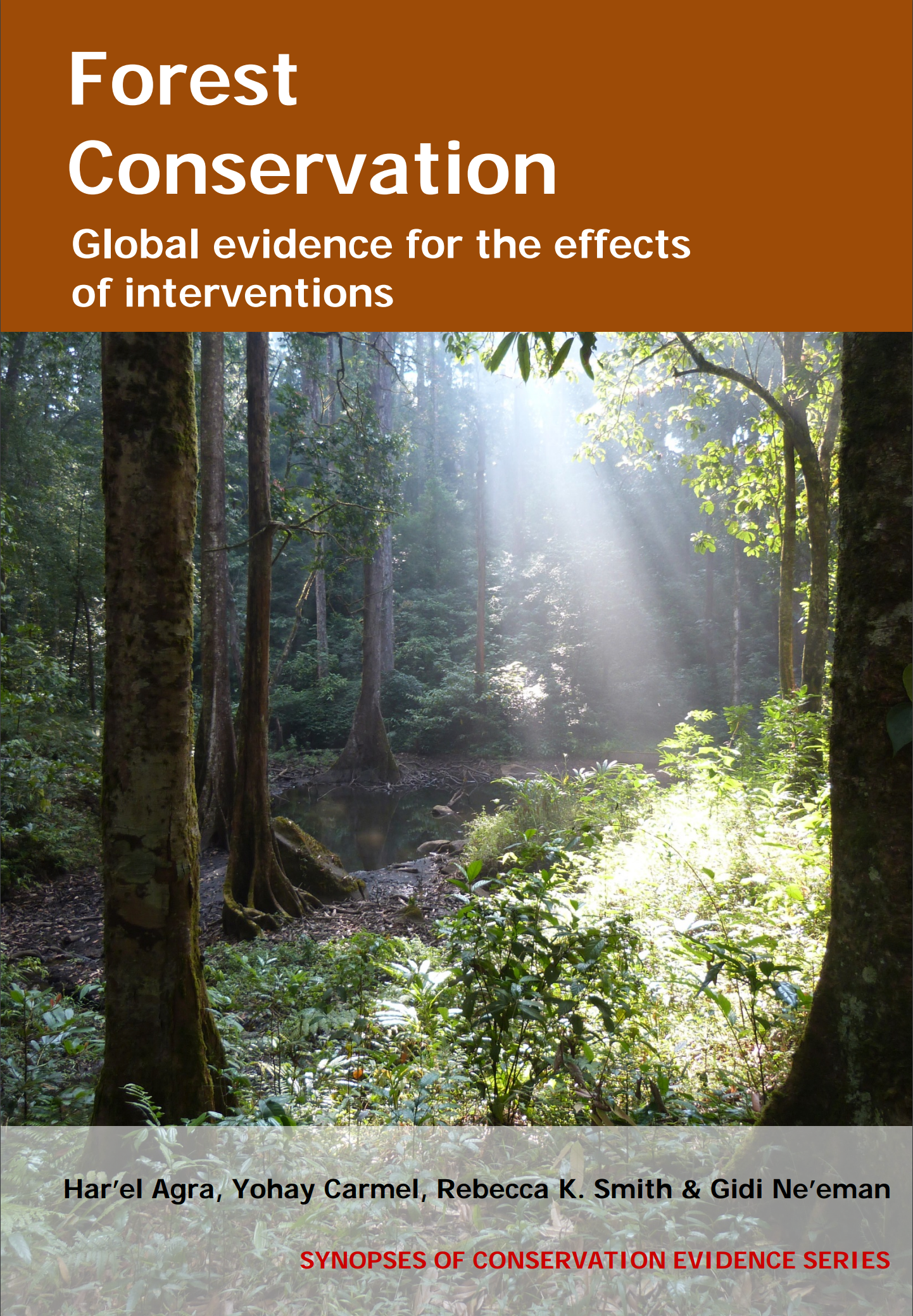Actions to conserve biodiversity
We have summarised evidence from the scientific literature about the effects of actions to conserve wildlife and ecosystems.
Review the evidence from the studies
Not sure what Actions are? Read a brief description.
Search for evidence
e.g. "frogs chytrid"
122 Actions found
Refine
Hide
122 Actions found
Download Actions
| 0 selected |
|
Order results by:
| Action | Effectiveness | Studies | Category | |
|---|---|---|---|---|
|
Incorporate existing trees or woods into the landscape of new developments Action Link |
No evidence found (no assessment) | 0 |
|
|
|
Maintain/create habitat corridors Action Link |
No evidence found (no assessment) | 0 |
|
|
|
Provide financial incentives not to graze Action Link |
No evidence found (no assessment) | 0 |
|
|
|
Adopt continuous cover forestry Action Link |
No evidence found (no assessment) | 0 |
|
|
|
Use brash mats during harvesting to avoid soil compaction Action Link |
No evidence found (no assessment) | 0 |
|
|
|
Sustainable management of non-timber forest products Action Link |
No evidence found (no assessment) | 0 |
|
|
|
Provide fuel efficient stoves Action Link |
No evidence found (no assessment) | 0 |
|
|
|
Provide paraffin stoves Action Link |
No evidence found (no assessment) | 0 |
|
|
|
Recharge groundwater to restore wetland forest Action Link |
No evidence found (no assessment) | 0 |
|
|
|
Construct water detention areas to slow water flow and restore riparian forests Action Link |
No evidence found (no assessment) | 0 |
|
|
|
Introduce beavers to impede water flow in forest watercourses Action Link |
No evidence found (no assessment) | 0 |
|
|
|
Reintroduce large herbivores Action Link |
No evidence found (no assessment) | 0 |
|
|
|
Pollard trees (top cutting or top pruning) Action Link |
No evidence found (no assessment) | 0 |
|
|
|
Coppice trees Action Link |
No evidence found (no assessment) | 0 |
|
|
|
Halo ancient trees Action Link |
No evidence found (no assessment) | 0 |
|
|
|
Adopt conservation grazing of woodland Action Link |
No evidence found (no assessment) | 0 |
|
|
|
Retain fallen trees Action Link |
No evidence found (no assessment) | 0 |
|
|
|
Imitate natural disturbances by pushing over trees Action Link |
No evidence found (no assessment) | 0 |
|
|
|
Use grazing to remove invasive plant species Action Link |
No evidence found (no assessment) | 0 |
|
|
|
Use prescribed fire to remove invasive plant species Action Link |
No evidence found (no assessment) | 0 |
|
|
|
Manually/mechanically remove native plants Action Link |
No evidence found (no assessment) | 0 |
|
|
|
Control large herbivore populations Action Link |
No evidence found (no assessment) | 0 |
|
|
|
Use fencing to enclose large herbivores (e.g. deer) Action Link |
No evidence found (no assessment) | 0 |
|
|
|
Control medium-sized herbivores Action Link |
No evidence found (no assessment) | 0 |
|
|
|
Adopt protected species legislation (impact on forest management) Action Link |
No evidence found (no assessment) | 0 |
|
Download Actions
| 0 selected |
|

Forest Conservation - Published 2016
Forest synopsis
Watch this search
If you are familiar with RSS feeds, please click the button below to retrieve the feed URL:
RSS feed for this searchIf you are unfamiliar with RSS feeds, we would suggest reading this BBC article.
Unfortunately, due to the number of feeds we have available, we cannot provide e-mail updates. However, you could use tools such as Feed My Inbox to do this for you.
What are 'Individual studies' and 'Actions'?
Individual studies
An individual study is a summary of a specific scientific study, usually taken from a scientific journal, but also from other resources such as reports. It tells you the background context, the action(s) taken and their consequences.
If you want more detail please look at the original reference.
Actions
Each action page focuses on a particular action you could take to benefit wildlife or ecosystems.
It contains brief (150-200 word) descriptions of relevant studies (context, action(s) taken and their consequences) and one or more key messages.
Key messages show the extent and main conclusions of the available evidence. Using links within key messages, you can look at the paragraphs describing each study to get more detail. Each paragraph allows you to assess the quality of the evidence and how relevant it is to your situation.
Where we found no evidence, we have been unable to assess whether or not an intervention is effective or has any harmful impacts.





)_2023.JPG)














